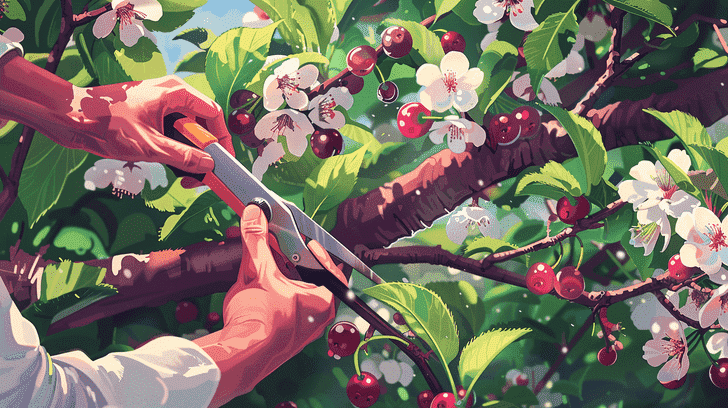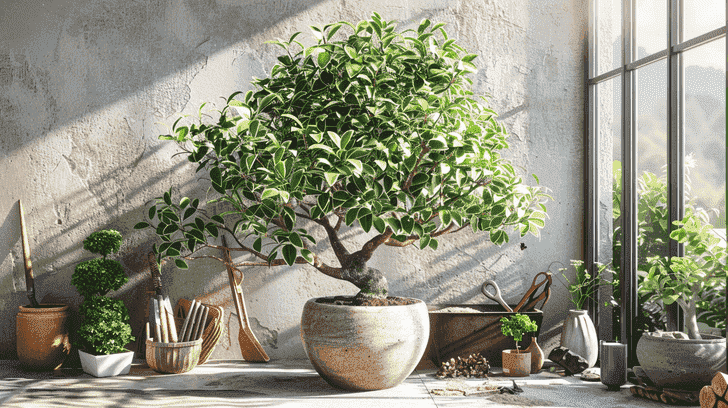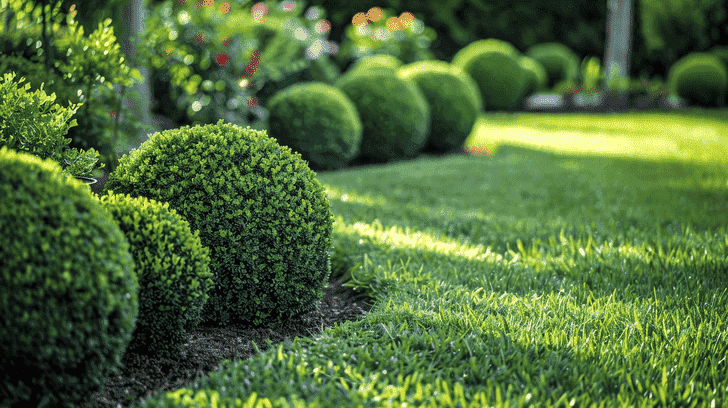Pruning Pine Trees – A Comprehensive Guide
You’re about to give your pine tree the TLC it needs! Pruning is essential for maintaining your tree’s health, appearance, and even increasing your property’s value.
Timing is everything, so prune during the dormant season to minimize stress and prevent disease. Identify dead, diseased, or damaged branches and use the right tools to make clean cuts.
You’ll want to pinch back terminal buds to encourage bushy growth and avoid over-pruning.
By following these tips, you’ll be well on your way to becoming a pine tree pruning pro.
Now, take the next step and discover the secrets to a thriving, stunning pine tree.
Why Should I Trim My Pine Tree?
Since pine trees can become overgrown and unruly if left unattended, trimming them regularly is vital to maintain their health and appearance. You’ll want to prune pine trees to promote healthy growth, as neglected trees can become vulnerable to disease and pests.
Proper tree trimming also enhances the tree’s aesthetic appeal, making it a valuable asset to your property. By learning effective pruning techniques, you’ll be able to maintain your tree’s shape and size, ensuring it doesn’t become a hazard.
Consider hiring a professional tree trimming service if you’re unsure about how to trim your pine tree. Regular pine tree pruning is essential for tree health and maintenance, so don’t neglect this essential task.
When to prune pine trees
You’ll want to prune your pine tree during its dormant season, typically from late winter to early spring, to minimize stress and prevent sap bleeding. This is the best time to prune a pine tree, as new growth hasn’t started yet, and the tree is less prone to disease.
Avoid pruning in late summer, as this can stimulate new growth that may not have time to harden off before winter. Trimming during the dormant season also allows you to see the tree’s structure more clearly, making it easier to identify branches that need to be removed.
Pine Tree Pruning How-To
Now that you know when to prune your pine tree, it’s time to get started with the pruning process itself.
Before you begin, you’ll need to gather the right tools and take a few precautions to guarantee your safety.
You’ll also want to take a close look at your tree to identify any branches that are dead, diseased, or damaged.
Preparing to Prune
Before grabbing your pruning shears, take a step back to assess the overall shape and size of your pine tree, identifying any areas that need attention. Look for dead, diseased, or damaged branches, as well as areas where the tree may be growing unevenly. This will help you determine the best pruning strategy for your tree’s health.
| Pruning Tool | Purpose | Tips |
| Pruning Shears | Trim small branches | Cut outside the branch collar |
| Loppers | Cut thicker branches | Make clean cuts, don’t tear |
| Pruning Saw | Remove large branches | Cut outside the branch collar |
| Gloves | Protect your hands | Choose durable, grip-enhancing gloves |
| Safety Goggles | Protect your eyes | Wear when trimming or sawing |
How to prune pine trees with “candling“
To prune pine trees with candling, start by identifying the terminal bud, which is the central, dominant bud at the tip of the branch.
This bud is the candle, and it’s where new growth emerges. When pruning, you’ll be pinching back the candle to encourage bushy growth and promote a fuller pine tree.
Make a clean pruning cut just above the branch collar, leaving the stub flush with the collar. This will help the tree heal quickly and reduce the risk of disease.
Be mindful of your pine tree’s trimming needs, as over-pruning can stress the tree. Make precise pruning cuts, and avoid tearing the bark to prevent damage.
Let’s Get Trimming
By using the pruning shears, you’re about to initiate a transformation in your pine tree’s shape and size. It’s time to trim a pine tree and give it a fresh new look.
The ideal time for the trimming process is late winter to early spring, when the tree is dormant. Pruning promotes a healthy growth pattern and prevents overcrowding.
Start by removing damaged or diseased branches, as trimming helps prevent the spread of disease.
With your pruning shears in hand, carefully cut out any dead or broken branches. If you’re not comfortable with the process, consider hiring tree trimming services. By doing so, you’ll be giving your pine tree the best chance to thrive.
Things to be careful of when pruning pine trees
As you prune your pine tree, you’ll want to be mindful of the potential risks that can harm your tree or even you. When pruning, avoid trimming too much of the tree’s foliage, as this can stress the tree and make it vulnerable to disease.
Be cautious when trimming branches, as they can break off and cause injury. It’s also essential to prune at the right time – late winter or early spring is ideal, as this minimizes sap bleeding and reduces the risk of disease.
During the trimming process, avoid trimming too close to the trunk, as this can cause damage. By being aware of these potential risks, you can prune your pine tree safely and effectively, promoting healthy growth and a beautiful appearance.
Keeping a Healthy Pine
You can maintain a healthy pine tree by providing it with the right conditions and regular maintenance. Regular pruning is essential to the health of the tree, as it helps remove dead branches and promotes a strong, balanced form.
When you need to prune your pine tree, it’s important to do it correctly to avoid damaging the tree. A professional tree trimming service can guide you through the trimming process, ensuring your pine tree’s best health.
FAQ
When should pine trees be pruned?
Pine trees typically require pruning during their dormant season, which usually falls between late winter and early spring, before new growth begins.
This allows you to shape your tree and remove any dead or damaged branches without interfering with the growing season.
If you’re unsure when to prune, consider the following:
- Prune in late winter or early spring to maintain your pine tree’s shape and promote healthy growth.
- Avoid pruning in late summer or fall, as this can stimulate new growth that may not have time to harden off before winter.
- Trimming pine trees during the dormant season reduces the risk of disease and pests.
Consider hiring professional tree trimming services if you’re unsure about the pruning process or if your tree is large or in a difficult location.
Is it okay to cut the bottom branches of a pine tree?
Can you safely remove the lower branches of your pine tree without causing harm to its overall health? Yes, you can! In fact, trimming the bottom branches of your pine tree is a common pruning practice.
This process, known as ‘raising the crown,’ involves cutting branches from the bottom of the tree to allow more sunlight to reach the ground and reduce clutter.
When done correctly, pruning the lower branches won’t harm your pine tree. However, it’s essential to follow proper trimming techniques to avoid damaging the tree.
Remove only the branches that are dead, diseased, or damaged, and use clean, sharp pruning tools to prevent spreading diseases.
How much can you trim off a pine tree?
You’ll typically want to limit your trimming to about one-quarter of the tree’s foliage in a single season. This guarantees the pine tree’s health and prevents stress.
When trimming pine trees, it’s vital to prune judiciously, as over-pruning can lead to disease and pest issues.
Here are some key considerations:
- Trimming in late summer or early fall helps the tree prepare for winter.
- Prune branches that are dead, diseased, or damaged to maintain the tree’s overall health.
- When trimming, make clean cuts just above a branch collar to promote healthy growth.
- Avoid over-trimming, as pine trees naturally grow slowly and may not recover quickly.
How to trim a pine tree without killing it?
When pruning your pine tree, it’s essential to follow specific guidelines to avoid causing irreparable harm, so it’s worth taking the time to understand the dos and don’ts of trimming.
To prune your pine tree safely, you’ll need to identify the branches that need trimming. Look for dead, diseased, or damaged branches that can harm the tree’s health.
| DO | DON’T |
| Prune branches at the right angle | Cut too much of the branch at once |
| Remove dead or diseased branches | Leave stubs, as they can cause decay |
| Trim branches in the dormant season | Prune during extreme weather conditions |
| Make clean cuts, just above a growth node | Cut too close to the trunk, damaging the bark |







